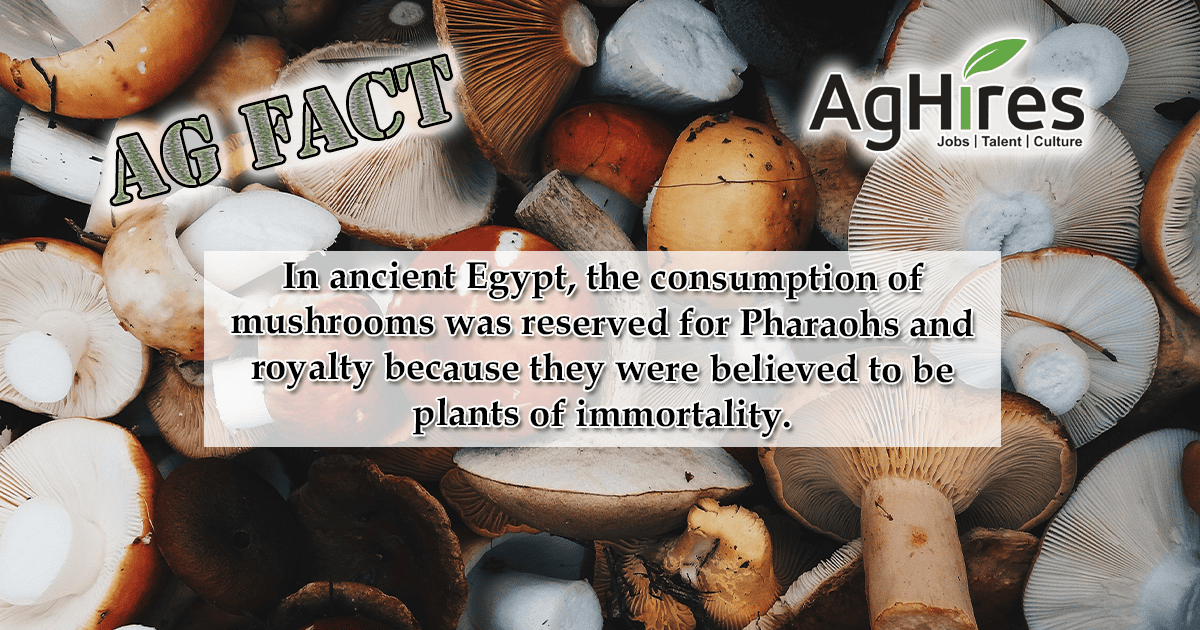
Mushrooms are neither a fruit nor vegetable. They are in a category all their own, fungi! Did you know these fungi are one of the most sustainable foods on the planet? Check out 17 more mushroom facts:
- The largest producer of mushrooms is China, which produces about half of the world’s farmed fungi.
- In ancient Egypt, the consumption of mushrooms was reserved for Pharaohs and royalty because they were believed to be plants of immortality.
- Mushrooms are grown in every state in the U.S., but Pennsylvania produces over 60% of the fresh mushrooms grown in the states. California is a distant second.
- 20,800 jobs are related to mushroom farming, while 8,600 of those jobs are in Pennsylvania.
- Kennett Square, PA is known as the “Mushroom Capital of the World” with 47 mushroom growers.
- Over 90% of the mushrooms consumed in the United States is the White Button Mushroom, and its mature version, Portobellos.
- 1 acre can produce about 1 million mushrooms each year. In 2017-18, 891 million pounds of mushrooms were produced in just 1 square mile.
- The majority of mushrooms grown for consumption are grown in controlled, sterilized environments. They are grown in indoor facilities called mushroom houses.
- In these houses, the fungi are grown in organic matter called substrate. The substrate comes from composting waste from other agriculture sectors, which makes mushroom farming a great partner for other farming operations.
- Materials used for mushroom substrate could include straw and bedding from horse farms or chicken litter from poultry farms. Even stumps from harvesting mushrooms are used. Other materials that may be used include cotton hulls, almond husks, corn cobs, brewers grain, wheat straw, molasses, saw dust, and other materials left over from processing food, fiber, and fuel materials.
- The substrate recipe is customized by each farmer and is very important. Substrate is very different in each state. It all depends on what is available to the grower.
- Mushroom spawn is also mixed into the substrate. Then peat moss casing is spread over the beds to hold in the moisture.
- Pins of mushrooms will begin to push up through the casing.
- Beds are harvested by hand throughout a 16 – 35-day cycle. They are typically harvested in staggered breaks (or flushes). It takes about 3 to 4 days to harvest each break.
- The growth cycle is about 6 to 10 weeks, which means farms can produce about 8 crops each year.
- Very few varieties of mushrooms found in the wild are highly poisonous, however most of them look like common edible varieties, so it unless you’re well-versed in mushrooms, it’s best not to eat wild mushrooms.
- There are over 20,000 known species of mushroom-forming fungi.
Check out a time lapse video of mushrooms growing from Mushroom Council.
Want more Agriculture Facts? Click here.
Follow us on Facebook and Twitter to get your weekly dose of Ag Facts.
Sources:
Lowimpact.org
Science Kids
American Mushroom
Mushroom Council.com
Agricultural Marketing Resource Center
American Farm Bureau Foundation for Agriculture
Read on for 17 facts you probably don’t know about mushrooms!






